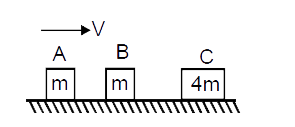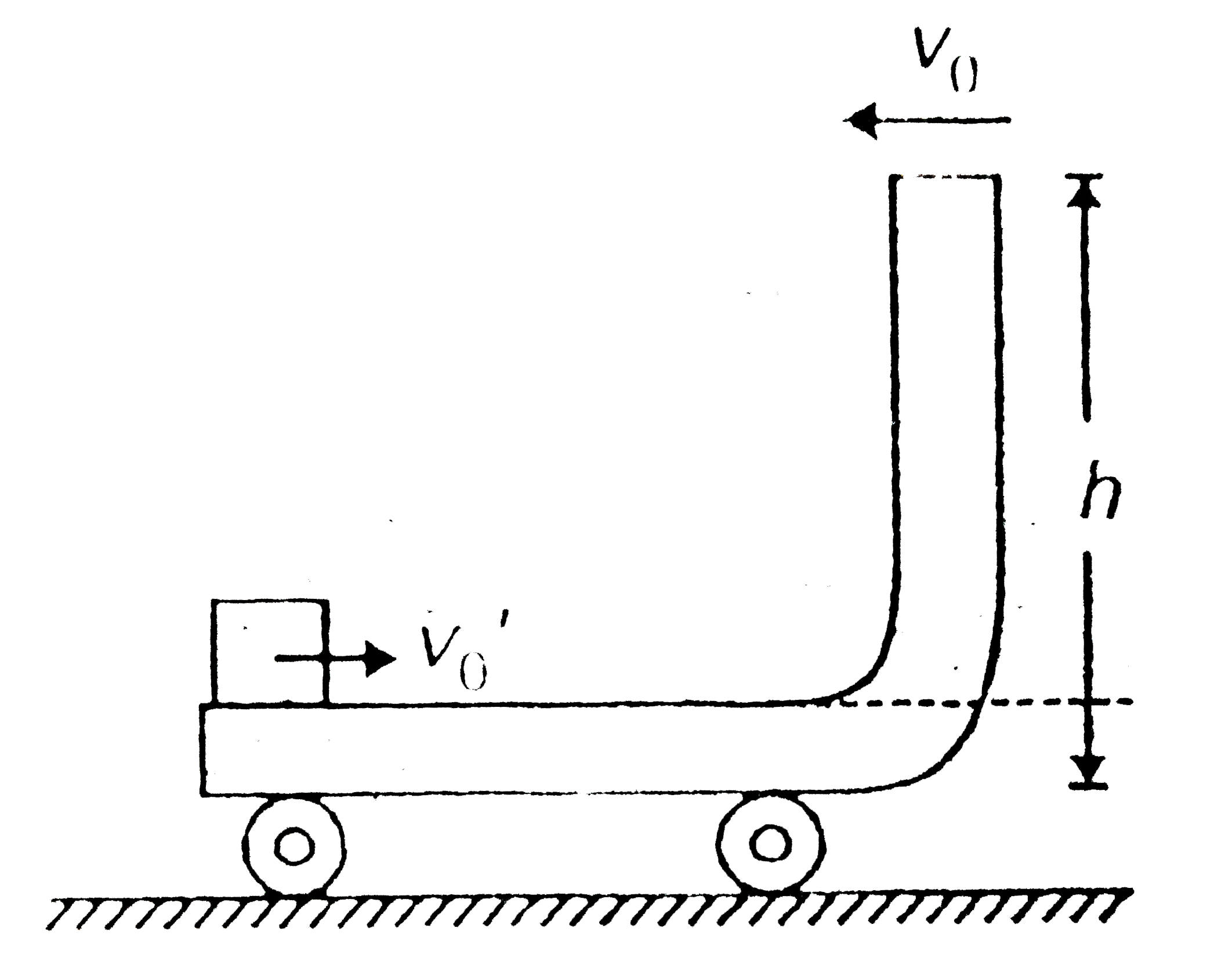In a two block system an initial velocity v0 with respect to ground is given to block A

the momentum of block A is not conserved
the momentum of system of blocks A and B is conserved
the increase in momentum of B is equal to the decrease in momentum of block A
All of the above
The correct Answer is:D
Force of friction on A is backward and force of friction on B is forward. Net external force on the system is zero. Hence, momentum of system will remain conserved. As the momentum of system is conserved, increase in momentum of B is equal to decrease in momentum of A.
Topper's Solved these Questions
- CENTRE OF MASSBook:DC PANDEYChapter:CENTRE OF MASSExercise:Assertion and reason
Explore 21 Videos
- CENTRE OF MASSBook:DC PANDEYChapter:CENTRE OF MASSExercise:Match the coloumns
Explore 9 Videos
- CENTRE OF MASSBook:DC PANDEYChapter:CENTRE OF MASSExercise:Check points
Explore 50 Videos
- CALORIMETRY AND HEAT TRANSFERBook:DC PANDEYChapter:CALORIMETRY AND HEAT TRANSFERExercise:Medical entrance s gallery
Explore 38 Videos
- CENTRE OF MASS, IMPULSE AND MOMENTUMBook:DC PANDEYChapter:CENTRE OF MASS, IMPULSE AND MOMENTUMExercise:Comprehension type questions
Explore 15 Videos
Similar Questions
Figure shows three identical blocks 1,2 & 3 each of mass m kept on frictionless surface. Block 1 is given initial velocity v0 in the direction shown. Block 1 hits block 2 and stops

View SolutionFigure shown a spring block system hanging in equilibrium. If a velocity v0 is imparted to the block in downwards direction . Find the amplitude of SHM of the block and the time after which it will reach a point at half the amplitude of block

View Solution
Knowledge Check
A block of mass m is kept on a smooth surface. It is also in contact with a thin plank of mass M=2m, one end of which is clamped to a wall as shown in the figure. The length of the plank is L. The block is given an initial velocity v0, towards right and initially the block is at a distance x0 from hinge. Coefficient of friction between the plank and block is μ.
Assume that througout the motion block remains, below the rod, then at what position from the fixed point it will stop?
(GIven β=v202μgL)
 Ax0e2βBx0eβCx0e−2βDx0e−β
Ax0e2βBx0eβCx0e−2βDx0e−βA block of mass 10kg is released on a fixed wedge inside a cart which is moved with constant velocity 10m/s towards right. Take initial velocity of block with respect to cart zero. Then work done by normal reaction (with respect to ground) on block in two second will be :(g=10m/s2).
 AzeroB960JC1200JDnone of these
AzeroB960JC1200JDnone of theseThree blocks are initially placed as shown in the figure. Block A has mass m and initial velocity v to the right. Block B with mass m and block C with mass 4 m are both initially at rest. Neglect friction. All collisions are elastic. The final velocity of block A is
 A0.6v to the leftB1.4v to the leftCv to the letD0.4v to the right
A0.6v to the leftB1.4v to the leftCv to the letD0.4v to the right
A smooth sledge is moving with constant velocity v0 toward left. A block is pushed toward right with a velocity v0 (relative to ground).

(A) Find the velocity with which the block escapes from the sledge and necessary critical v0 for escaping from the sledge
(B) Will the block launch onto the sledge again?
View SolutionThree blocks are initially placed as shown in the figure. Block A has mass m and initial velocity v to the right. Block B with mass m and block C with mass 4 m are both initially at rest. Neglect friction. All collisions are elastic. The final velocity of block A is

View SolutionThe block shown in the diagram has a mass of 2μg and a charge of 2×10−9C. If the block is given an initial velocity of 2ms−1 in the x - direction at t = 0 and an electric field of 2NC−1 is switched on in the x - direction, then the range (R) of the block on the ground will be

View SolutionTwo Blocks System|Questions
View SolutionTwo identical blocks of mass m, each are connected by a spring as shown in figure. At any instant of t = 0, one block is given a velocity V0 and other is given a velocity 2V0 in the same direction simultaneously as shown in figure. The maximum energy stored in spring

View Solution

